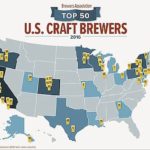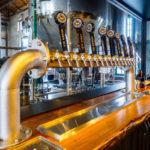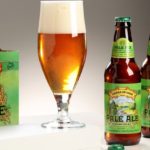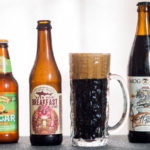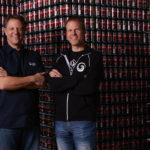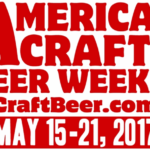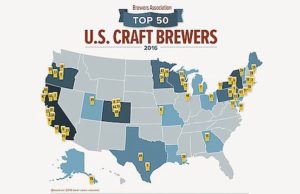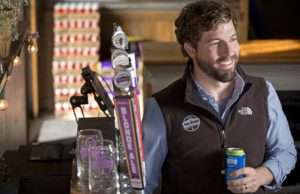Craft Beer’s Answer to Light Beer
Syda Productions/Shutterstock
When you’re having more than one, you should be drinking session beer.
As you can imagine, there’s a bit of beer advertising rattling around in the recesses of my mind. If I concentrate hard enough, I can hear Schaefer’s infectiously memorable jingle in my head: The one beer to have when you’re having more than one. Louis Armstrong even sang those lyrics on a television commercial.
Schaefer isn’t what it used to be, and in a completely different way, neither is the beer market. But the brewery’s message—the desire for a refreshing beer that tastes good, glass after glass, without knocking you off your feet—is now more popular than ever. The Schaefer ad never mentioned that second part of that proposition because it didn’t have to. There were few beers on American shelves that were significantly stronger than Schaefer or its ubiquitous competitors Budweiser and Ballantine.
That’s definitely changed with the shift to ever more potent craft beers. IPA, the most popular style, used to clock in at around 5.5 percent alcohol by volume, but now regularly hovers around 7 percent. Its big brother, double (or imperial) IPA, sometimes even soars over 9 percent ABV.
Those are tough numbers to swallow for those of us who like drinking beer rather than nursing it. And so out of necessity many drinkers have turned to what’s known in the United Kingdom as “session beer,” a lower alcohol but still flavorful pour—essentially the craft brewer’s answer to light beer. Over the last five years, it’s been a growing trend in the U.S. as people rediscover the joy of drinking small beer in big glasses.
The definition of session beer varies depending on who you ask. My own rule is that a beer must be 4.5 percent ABV or lower. But Tom Kehoe, founder of Yards Brewing in Philadelphia, has a more pragmatic view of it. “Session beer is relative to the person consuming said beer,” he says. “To me, a session beer is just a beer you can drink until the pub closes.”
Kehoe has been making session beers since before the category caught fire. Yards, founded in 1994, is growing by leaps and bounds, and its two best-selling beers, Philadelphia Pale and Brawler, weigh in at 4.6 percent ABV and 4.2 percent ABV, respectively. Neither has ever been marketed as “session” or even “lower alcohol,” and Kehoe guesses only half of Yards consumers even realize they’re not higher octane. They’re selling because they’re good beer.
That’s what Chris Lohring has always felt about his Notch Brewing Pils, which is at 4 percent ABV. It’s not a good session-strength pilsner, it’s simply a good pilsner. Lohring is betting big on session beer; since Notch started in 2010, that’s all he has made.
“My session beers are not regular beers made lower,” he states emphatically. “I’ve brewed only one 5-percent [beer] in the last 12 years, and over 50 unique session beers.”
Notch’s beers fall into a number of different categories: Pils and several other Czech-style lagers, a tingly sour Berliner weisse, an earthy saison and numerous English milds and bitters. The brewery’s selection proves that there is ample variety to be had with a lower ABV.
But the session beer that’s getting all the press in America is the so-called session IPA. It sounds like an oxymoron, since IPAs are generally stronger beers. So how do brewers make a lower-proof version while retaining the style’s signature hoppy note? The answer is a beer with the strength of a relatively small pale ale, but more decisively hopped, with an emphasis on adding aroma hops at the end of the brewing process.
One of these beers is the aptly named All Day IPA created by Founders Brewing in Grand Rapids, Michigan. “We were seeing a significant number of new consumers that were craft curious and wanted to explore new options,” says Dave Engbers, co-founder of the brewery. “We had built our reputation off of big, bold, and complex beers with huge aromatics and we weren’t willing to compromise our reputation. We knew we had to create a beer that held true to the same philosophy but needed to be lower [proof].”
It was a brilliant move. All Day, at 4.7 percent ABV, was first introduced in limited quantities in 2012 and was instantly popular.
“The response was so positive the following year we released it as a seasonal [offering],” Engbers remembers. “And it quickly became the catalyst to Founders investing in our first canning line. Again, the sales response was huge and the decision to make All Day IPA part of our year-round portfolio was a no-brainer.”
Given that the biggest-selling beers in America are still mainstream light beers—which range between 3-percent and just over 4-percent ABV—session beers may well be the key to craft beer’s continued success as more and more people look for a local brewery to support.
“Session beers are the future of craft beer,” is Kehoe’s bold prediction. “People are realizing they don’t need to sacrifice low alcohol for flavor. They can have both.”
So, I guess, session beer, when you’re having more than one…
Click here to view original web page at www.thedailybeast.com

